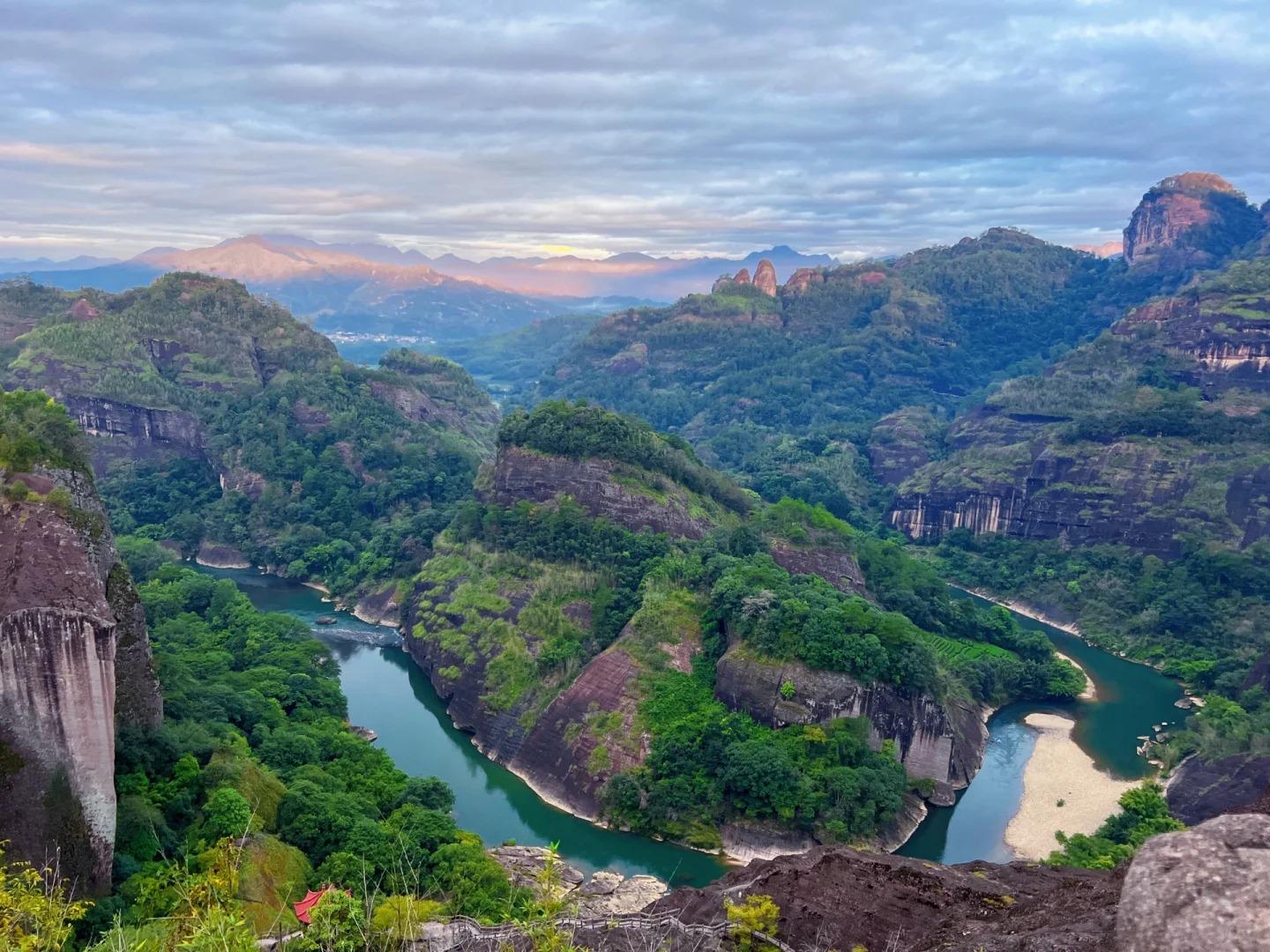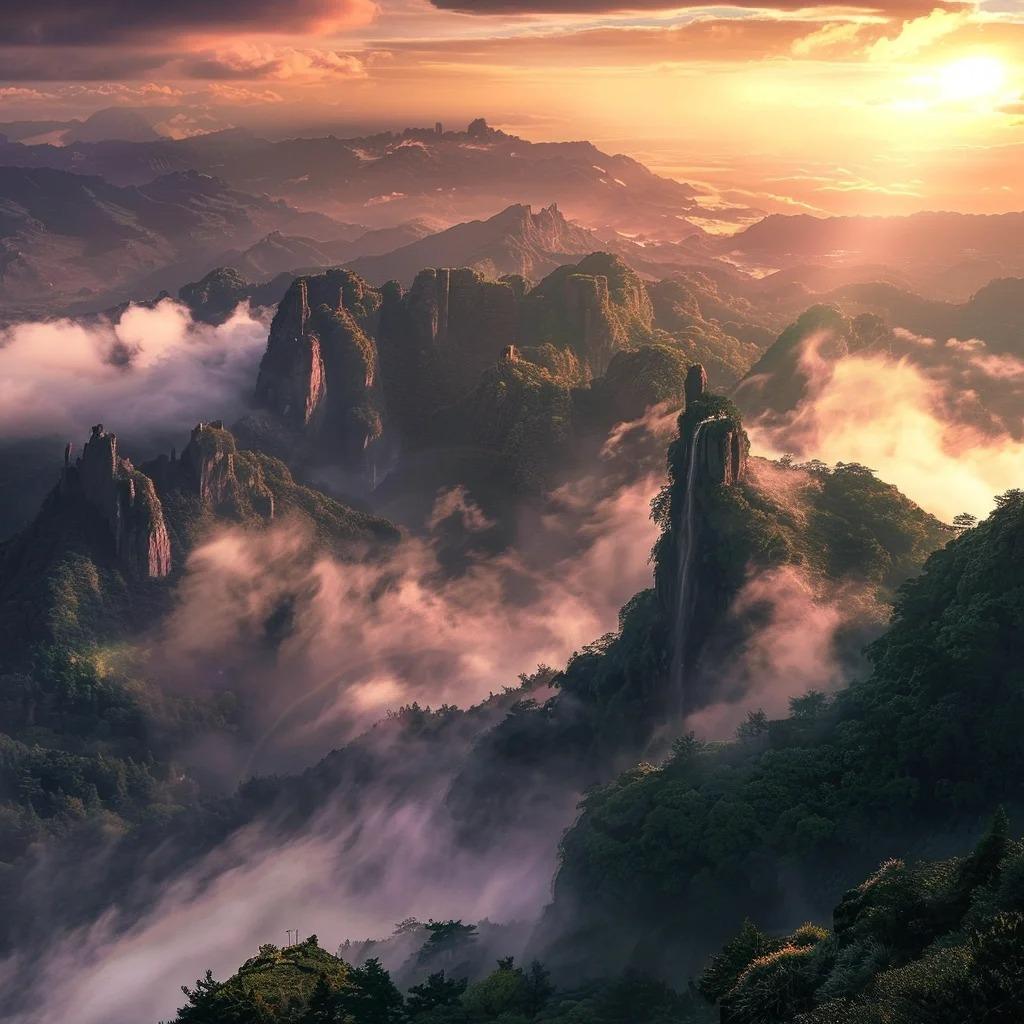Visiting Information
| Information | Details |
|---|---|
| Chinese Name | 武夷山 (Wǔyí Shān) |
| Location and Address | Wuyishan City, Nanping, Fujian Province, China |
| Opening Time/Hours | All year round, 6:30 AM – 6:00 PM |
| Entrance Fee | 225 CNY (April to October) 160 CNY (November to March) Additional fees for specific attractions inside |
| How to Get There | By Metro: Not available By Bus: Take bus 6, 7, or 8 from Wuyishan City to the scenic area By Taxi: Available from Wuyishan City, about 15-20 minutes ride |
| Best Time for Visit | March to November, with peak seasons in April-May and September-October |
| Contact Info | +86 599 5256248 |
Overview
Wuyi Mountain, located in the northwest of Fujian Province, is a UNESCO World Heritage Site renowned for its biodiversity, cultural relics, and breathtaking landscapes. The area covers approximately 60 square kilometers and is famous for its picturesque mountains, clear waters, and rich tea culture. Wuyi Mountain is not only a natural wonder but also a place of significant historical and cultural importance in China.
Historical Background
The history of Wuyi Mountain dates back to the Neolithic Age, with evidence of human activity from over 4,000 years ago. During the Tang Dynasty (618-907 AD), it became a center for Taoism and Buddhism. The area gained prominence during the Song Dynasty (960-1279 AD) as a center for Neo-Confucianism, with the establishment of the Wuyi School by Zhu Xi. Throughout history, Wuyi Mountain has been a retreat for scholars, poets, and painters, inspiring countless works of art and literature. It was also the birthplace of the famous Wuyi Rock Tea, which has been cultivated in the area for over 1,000 years.
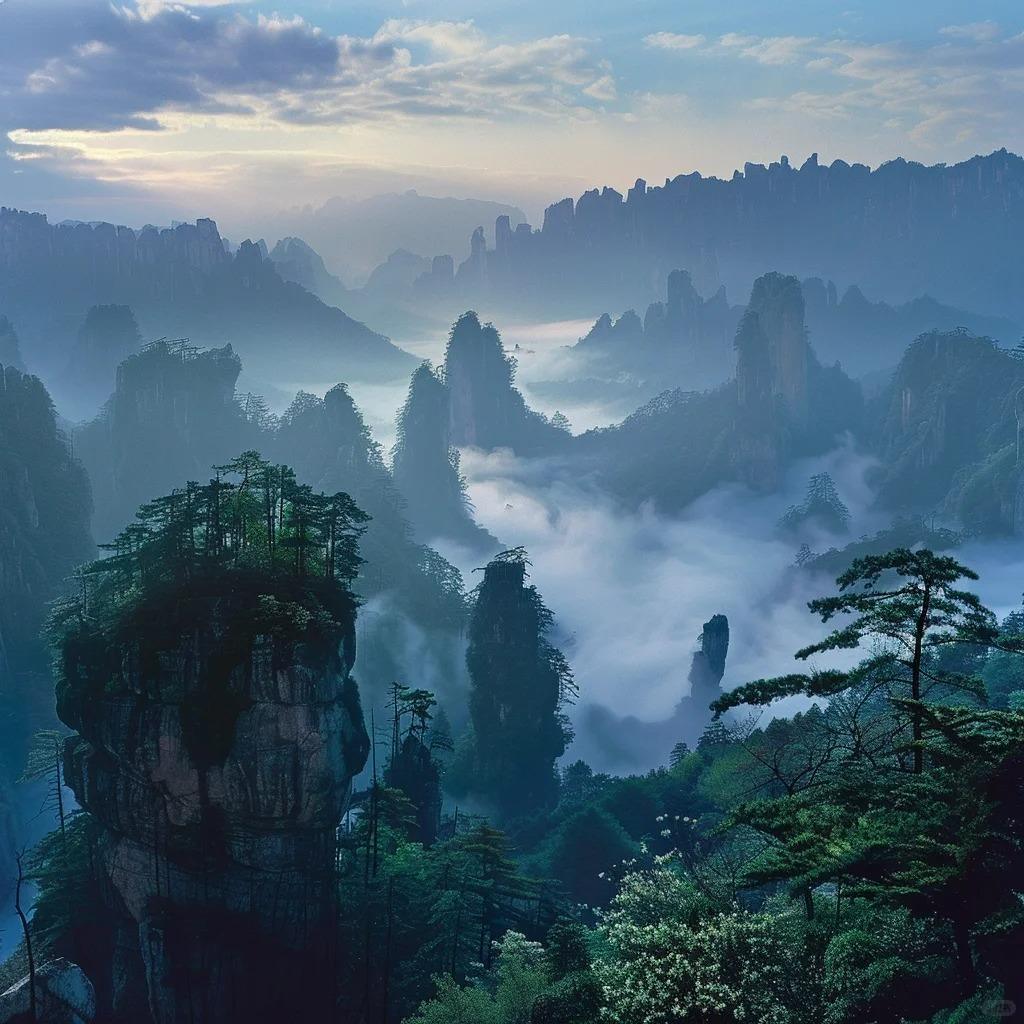
Architectural Features
- Nine-Bend Stream (Jiuqu Xi): This 9.5-kilometer long stream is the centerpiece of Wuyi Mountain scenic area. It meanders through the mountains, creating nine distinct bends, each offering unique and stunning views. Visitors can take bamboo raft rides along the stream to enjoy the scenery and learn about the local ecology and history.
- Wuyi Palace (Wuyi Gong): Located at the foot of Tianyou Peak, this ancient complex was originally built during the Tang Dynasty as a Taoist temple. It later became an imperial palace and a center for Confucian studies. The complex includes several halls, pavilions, and courtyards, showcasing traditional Chinese architecture and offering insights into the area’s religious and cultural history.
- Tianyou Peak: Standing at 408 meters, Tianyou Peak is the highest peak in the Wuyi Mountain scenic area. It offers panoramic views of the surrounding landscape and is home to several historic inscriptions carved into the rock face. A climb to the top provides visitors with breathtaking vistas and a sense of the area’s natural grandeur.
- Ancient Tea Terraces: The hillsides of Wuyi Mountain are dotted with ancient tea terraces, some dating back over a thousand years. These terraces are not only productive agricultural lands but also form an important part of the cultural landscape, reflecting the long history of tea cultivation in the area.
Cultural Importance
Wuyi Mountain holds immense cultural significance in China. It is the birthplace of the Wuyi Rock Tea, one of China’s most famous teas, and has been a center of tea culture for centuries. The area played a crucial role in the development of Neo-Confucianism, particularly through the Wuyi School founded by Zhu Xi. It has also been a source of inspiration for countless poets, painters, and scholars throughout Chinese history. The combination of natural beauty and cultural heritage makes Wuyi Mountain a symbol of the harmonious relationship between humans and nature in Chinese philosophy.
Surrounding Attractions
- Dahongpao Scenic Area: Located within the Wuyi Mountain area, this scenic spot is famous for being the original site of the legendary Dahongpao tea plants. Visitors can see the “mother trees” of this prestigious tea variety, learn about tea cultivation techniques, and enjoy the beautiful surroundings. The area also features several historic sites related to tea culture and production.
- Xiamei Ancient Village: Situated about 10 kilometers from the main Wuyi Mountain scenic area, Xiamei is a well-preserved Qing Dynasty village known for its traditional architecture and tea culture. The village features numerous historic buildings, including old tea warehouses and ancestral halls. Visitors can experience the traditional lifestyle of a Chinese tea village and learn about the area’s tea trading history.
- Wuyi Palace Ruins: These ruins, located near the entrance of the Nine-Bend Stream, are the remains of an ancient imperial palace dating back to the Tang Dynasty. The site includes foundations of various structures and provides insight into the area’s long history as a center of imperial patronage and religious activity.
- Water Curtain Cave: This natural cave, formed by years of water erosion, creates a spectacular “water curtain” effect as water cascades over its entrance. The cave is not only a natural wonder but also holds cultural significance, having been mentioned in various historical texts and poems.
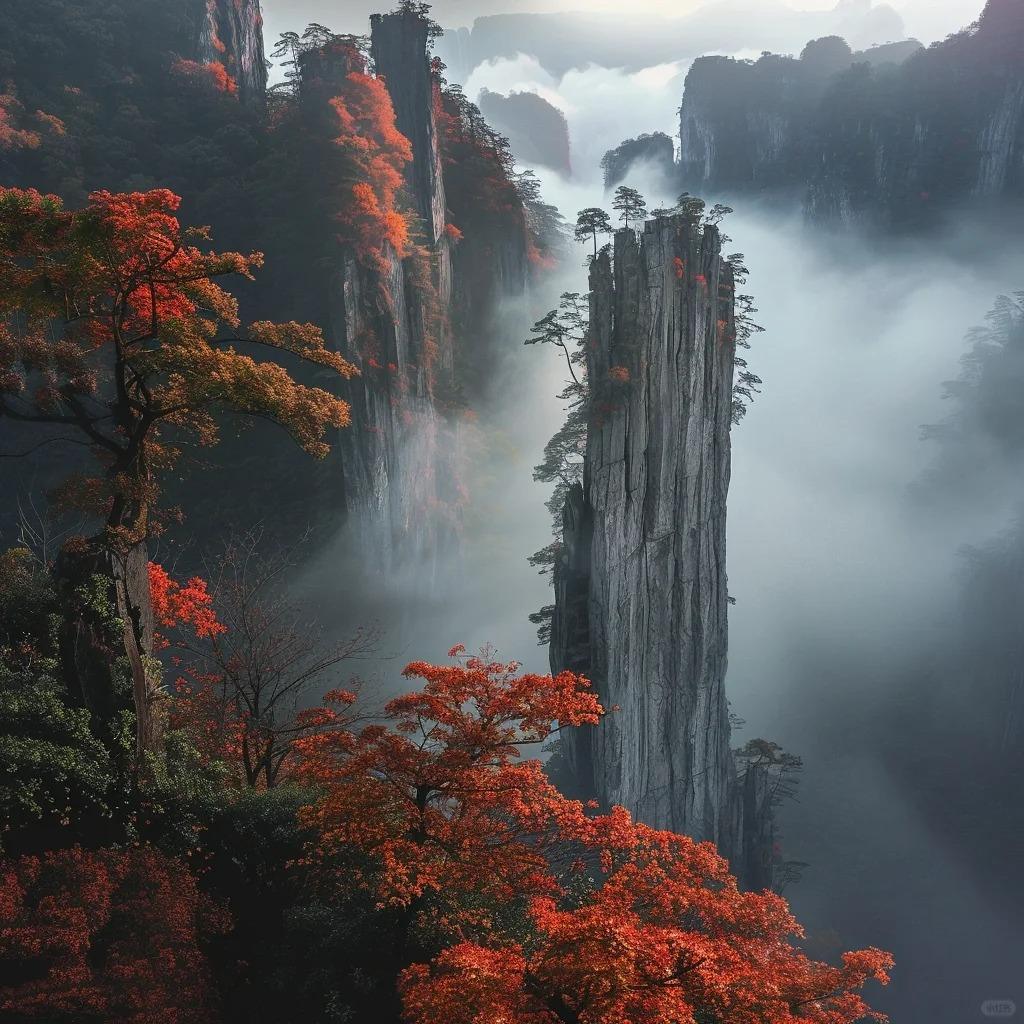
Photography Opportunities
- Nine-Bend Stream Vistas: The winding course of the Nine-Bend Stream offers numerous photography opportunities. Each bend presents a unique composition of water, cliffs, and lush vegetation. Early morning or late afternoon light can create stunning reflections on the water’s surface, while mist often adds an ethereal quality to the scenes.
- Tea Terraces Landscapes: The ancient tea terraces on the hillsides of Wuyi Mountain provide excellent subjects for landscape photography. The geometric patterns of the terraces contrasting with the natural contours of the mountains create visually striking images, especially during the golden hours of sunrise and sunset.
- Tianyou Peak Panoramas: The summit of Tianyou Peak offers 360-degree views of the Wuyi Mountain area, perfect for capturing sweeping panoramic shots. On clear days, photographers can capture the dramatic landscape of peaks, valleys, and the winding Nine-Bend Stream below.
- Misty Mountain Scenes: Wuyi Mountain is often shrouded in mist, especially in the early mornings and during the rainy season. This natural phenomenon creates atmospheric and moody scenes, with mountain peaks emerging from the mist, ideal for capturing the area’s mystical quality.
Modern Importance
- Ecological Conservation: Wuyi Mountain plays a crucial role in biodiversity conservation. As a UNESCO World Heritage Site and national nature reserve, it protects numerous rare and endangered species of plants and animals. The area serves as a living laboratory for ecological research and conservation efforts, contributing to our understanding of subtropical forest ecosystems.
- Tea Industry: Wuyi Mountain remains a vital center for China’s tea industry, particularly for the production of Wuyi Rock Tea. The area’s unique geography and climate contribute to the tea’s distinctive flavor, making it highly sought after both domestically and internationally. The tea industry here not only preserves traditional cultivation methods but also drives economic development in the region.
- Cultural Heritage Preservation: As a site of significant cultural and historical importance, Wuyi Mountain plays a key role in preserving tangible and intangible cultural heritage. This includes the protection of ancient structures, traditional tea cultivation techniques, and the continuation of cultural practices associated with the area. It serves as an important link to China’s past and helps maintain cultural continuity.
- Tourism and Economic Development: Wuyi Mountain is a major tourist destination, attracting millions of visitors annually. This tourism plays a significant role in the local economy, providing employment opportunities and driving infrastructure development. It also serves as a showcase of China’s natural beauty and cultural heritage to both domestic and international audiences, contributing to cultural exchange and understanding.
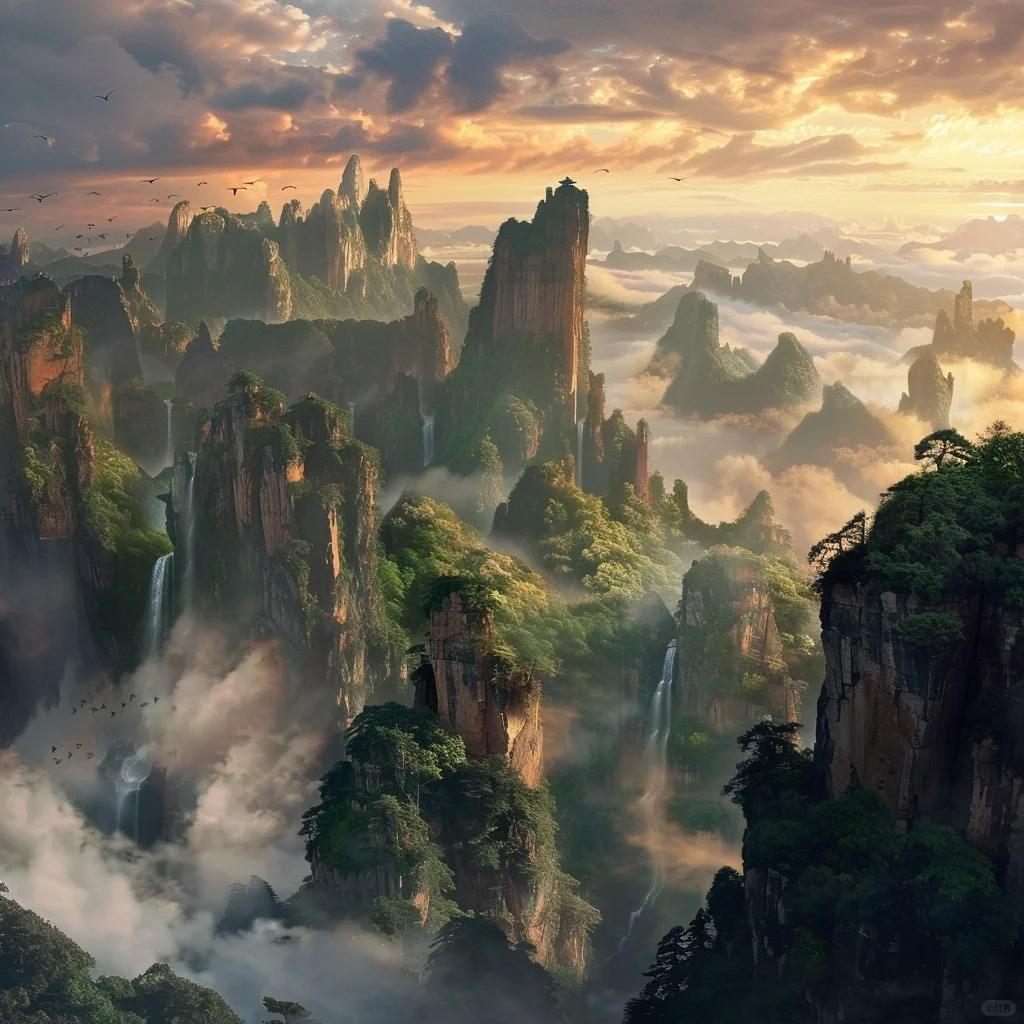
FAQ
- What is Wuyi Mountain famous for?
Wuyi Mountain is famous for its breathtaking natural scenery, rich biodiversity, cultural relics, and as the birthplace of Wuyi Rock Tea. It’s renowned for the Nine-Bend Stream, stunning mountain landscapes, ancient tea terraces, and its significance in Chinese history and philosophy. - What’s inside Wuyi Mountain?
Inside Wuyi Mountain, you’ll find the Nine-Bend Stream, Tianyou Peak, Wuyi Palace, ancient tea terraces, diverse flora and fauna, hiking trails, and various cultural and historical sites. The area also includes tea plantations, caves, and scenic spots like the Water Curtain Cave. - Is Wuyi Mountain free?
No, Wuyi Mountain is not free. There is an entrance fee that varies depending on the season, with additional fees for certain attractions and activities within the scenic area. - Is Wuyi Mountain worth visiting?
Yes, Wuyi Mountain is definitely worth visiting. It offers a unique combination of natural beauty, cultural heritage, and ecological diversity. Its status as a UNESCO World Heritage Site attests to its significant universal value. - What to do in Wuyi Mountain?
At Wuyi Mountain, you can take a bamboo raft ride on the Nine-Bend Stream, hike to various peaks for stunning views, visit ancient tea plantations, explore historical sites like Wuyi Palace, experience tea culture, observe diverse wildlife, and enjoy photography in picturesque settings. - How do I get to Wuyi Mountain in the local city?
To get to Wuyi Mountain from Wuyishan City:
1. By Bus: Take bus 6, 7, or 8 from Wuyishan City to the scenic area.
2. By Taxi: It’s about a 15-20 minute ride from Wuyishan City.
3. There’s no metro system in Wuyishan City. - How to visit Wuyi Mountain?
To visit Wuyi Mountain:
1. Plan to spend at least 2-3 days to fully explore the area.
2. Purchase tickets at the entrance or book in advance during peak seasons.
3. Start early in the morning to avoid crowds and heat (in summer).
4. Take a bamboo raft ride on the Nine-Bend Stream for a unique experience.
5. Hike to Tianyou Peak for panoramic views.
6. Visit tea plantations and try local Wuyi Rock Tea.
7. Explore Wuyi Palace and other historical sites.
8. Wear comfortable walking shoes and bring water, as there’s a lot of walking involved.
9. Consider hiring a guide for deeper insights into the area’s history and ecology.
10. Check the weather forecast and bring appropriate clothing, as the mountain weather can be changeable.


